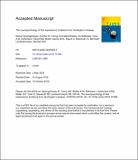Files in this item
The neuropsychology of first impressions : evidence from Huntington’s disease
Item metadata
| dc.contributor.author | Sprengelmeyer, Reiner H. | |
| dc.contributor.author | Young, Andrew W. | |
| dc.contributor.author | Baldas, Eva-Maria | |
| dc.contributor.author | Ratheiser, Iris | |
| dc.contributor.author | Sutherland, Clare A. M. | |
| dc.contributor.author | Müller , Hans-Peter | |
| dc.contributor.author | Grön, Georg | |
| dc.contributor.author | Süssmuth, Sigurd D. | |
| dc.contributor.author | Landwehrmeyer, G. Bernhard | |
| dc.contributor.author | Orth, Michael | |
| dc.date.accessioned | 2017-10-21T23:31:51Z | |
| dc.date.available | 2017-10-21T23:31:51Z | |
| dc.date.issued | 2016-12 | |
| dc.identifier | 246731210 | |
| dc.identifier | c9e5b560-1efe-476b-84d8-01ca2ccdf6da | |
| dc.identifier | 84995543435 | |
| dc.identifier | 000390510700010 | |
| dc.identifier.citation | Sprengelmeyer , R H , Young , A W , Baldas , E-M , Ratheiser , I , Sutherland , C A M , Müller , H-P , Grön , G , Süssmuth , S D , Landwehrmeyer , G B & Orth , M 2016 , ' The neuropsychology of first impressions : evidence from Huntington’s disease ' , Cortex , vol. 85 , pp. 100-115 . https://doi.org/10.1016/j.cortex.2016.10.006 | en |
| dc.identifier.issn | 0010-9452 | |
| dc.identifier.other | ORCID: /0000-0002-3083-5995/work/64697293 | |
| dc.identifier.uri | https://hdl.handle.net/10023/11899 | |
| dc.description.abstract | Impairments of emotion recognition have been widely documented in Huntington's disease (HD), but little is known concerning how these relate to other aspects of social cognition, including first impressions of traits such as trustworthiness and dominance. Here, we introduce a novel and sensitive method to investigate the ability to evaluate trustworthiness and dominance from facial appearance, with control tasks measuring ability to perceive differences between comparable stimuli. We used this new method together with standard tests of face perception to investigate social cognition in HD. We found that a subgroup of people with HD was impaired at perceiving trustworthiness and dominance, and that perceiving trustworthiness and dominance were correlated with impaired facial expression recognition. In addition, we used diffusion tensor imaging (DTI) to provisionally identify candidate brain regions associated with social cognition by contrasting regional functional anisotropy (FA) measures between subgroups of HD participants showing normal or impaired perception of trustworthiness and dominance, and by correlating these regional brain abnormalities with behavioural performance on tests of emotion recognition. In this way we show for the first time alterations in perception of trustworthiness and dominance in people with HD and link these to regions which may map the boundaries of the social brain. The pattern of breakdown seen in this neurodegenerative disease can thus be used to explore potential inter-relationships between different components of social cognition. | |
| dc.format.extent | 16 | |
| dc.format.extent | 2359878 | |
| dc.language.iso | eng | |
| dc.relation.ispartof | Cortex | en |
| dc.subject | Huntington's disease | en |
| dc.subject | Trustworthiness | en |
| dc.subject | Dominance | en |
| dc.subject | Face perception | en |
| dc.subject | Emotion recognition | en |
| dc.subject | DTI | en |
| dc.subject | BF Psychology | en |
| dc.subject | NDAS | en |
| dc.subject | BDC | en |
| dc.subject | R2C | en |
| dc.subject.lcc | BF | en |
| dc.title | The neuropsychology of first impressions : evidence from Huntington’s disease | en |
| dc.type | Journal article | en |
| dc.contributor.institution | University of St Andrews. School of Psychology and Neuroscience | en |
| dc.contributor.institution | University of St Andrews. Institute of Behavioural and Neural Sciences | en |
| dc.identifier.doi | 10.1016/j.cortex.2016.10.006 | |
| dc.description.status | Peer reviewed | en |
| dc.date.embargoedUntil | 2017-10-21 |
This item appears in the following Collection(s)
Items in the St Andrews Research Repository are protected by copyright, with all rights reserved, unless otherwise indicated.

